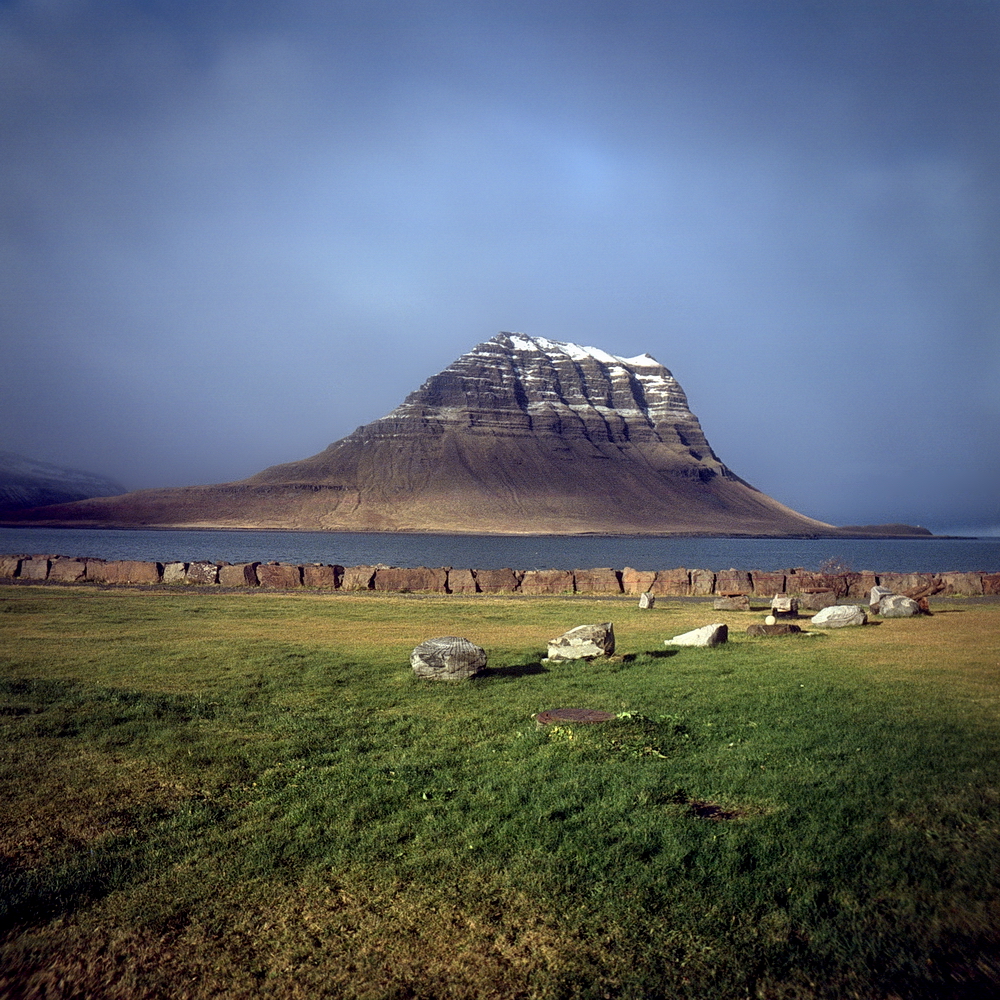A Full Information to Leica M Lenses

Leica. The identify conjures notions of luxurious, historical past, high quality, and precision. This particularly applies to Leica’s M-mount lenses. Whereas a few of Leica’s newest digital camera our bodies just like the M11 have gathered reward, the lenses have set the business gold commonplace.
This text is an entire information to Leica M lenses, from selecting the correct lens so that you can understanding Leica’s naming conventions.
Desk of Contents
A Historical past in Glass
Leica may be thought of a glass firm that occurs to make cameras. Leitz, the father or mother firm of Leica (LEItz CAmera), initially produced world-renowned microscopes and searching riflescopes, till worker Oskar Barnack constructed a compact 35mm digital camera in 1913 and made history.
One other Leica legend, Max Berek, designed the Elmar 50mm f/3.5 that accompanied the primary commercially obtainable Leica digital camera in 1925. Since then, from broad to straightforward to tele lenses, almost all of them primes, Leica M glass has lined world occasions and created nice artwork.
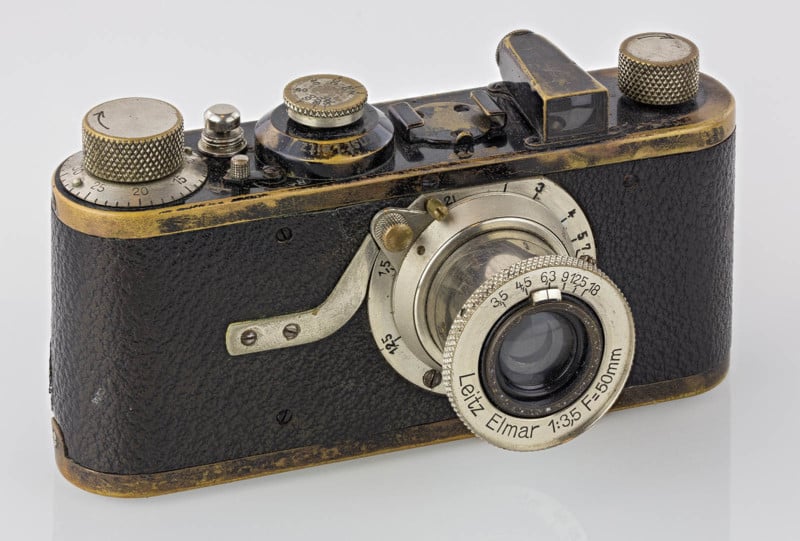
The Leica M-mount, launched in 1954, makes use of a bayonet system. Earlier than that, lenses had been screwed onto the digital camera physique. Leica lenses from the Thirties and after can nonetheless be used on a digital M digital camera by means of an adapter. Classic lenses, particularly from 1954 onward, nonetheless render beautiful photographs with distinctive enchantment. At Leica, longevity is custom.
Lens Identify Meanings
The long-lasting Leica names designate lens pace. For instance, an Elmar shoots no quicker than f/3.5, an Elmarit is f/2.8, a Summicron is an f/2, a Summilux is an f/1.4 and a Noctilux is f/1.25 or quicker.
- Elmar: Most aperture f/3.5
- Elmarit: Most aperture f/2.8
- Summicron: Most aperture f/2
- Summilux: Most aperture f/1.4
- Noctilux: Most aperture f/1.25 or quicker
These names also imply meaning. Take the Noctilux, which derives its identify from noct-, which means night time in Latin, and -lux, which means mild. A Noctilux f/0.95 can virtually see in the dead of night. Many lens names embody variations that denote design levels and eras, such because the well-known Summicron 50mm v2 from 1956, fairly a unique species from right this moment’s v6 APO-Summicron.
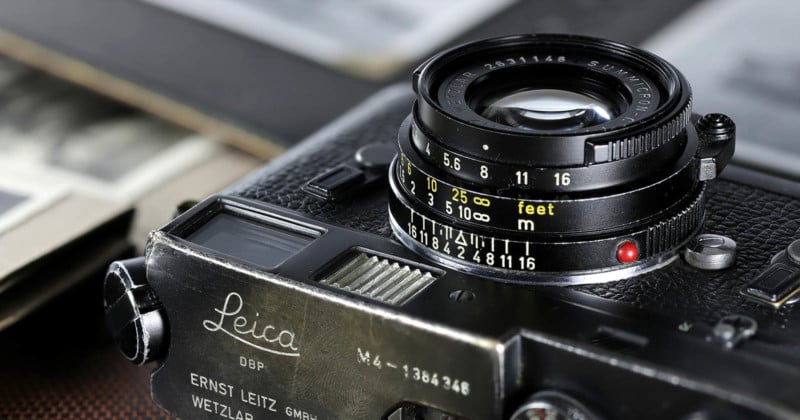
M Lens Classes
Let’s take a fair nearer have a look at every of the classes of M-mount lenses, every of which usually comprises a number of fashions with completely different focal lengths, options, and colours.
Noctilux
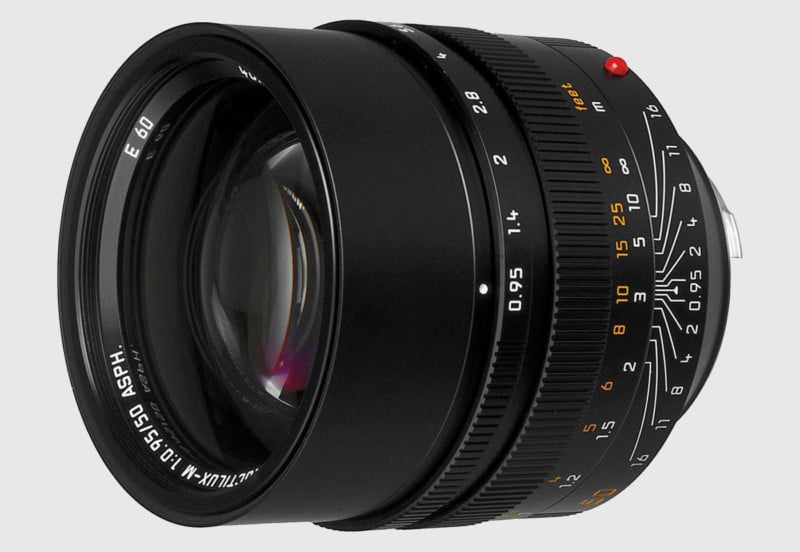
The forbidden lens, and one of the crucial costly digital camera lenses on Earth, the Noctilux broke new floor upon its launch in 1966 and continues to dominate right this moment. At f/0.95, Leica calls it “the world’s quickest aspherical lens.”
The Noctilux excels in low mild. It additionally affords essentially the most and the dreamiest bokeh, the standard of the out-of-focus areas within the background of a photograph, of any Leica lens. Pleasing, mild colours additionally include a Noctilux. Nevertheless, such a robust lens brings challenges. For instance, a Noctilux is just not straightforward to shoot broad open in brilliant mild, e.g. outside throughout the day, so ND filters develop into needed except capturing with an M11, or an SL physique with an M lens adapter, and their lightning-fast digital shutter.

Focusing with such a shallow depth of subject requires a skilled rangefinder eye. At f/1, for instance, specializing in a topic six toes away leads to a pointy zone lower than 4 inches deep. Up shut, a topic’s eye may very well be in focus whereas an eyelash is just not.
Noctilux photographs is probably not as sharp as these from a Summicron, however the background of a Noctilux photograph taken at full aperture turns into so stunning, who cares?
Summilux
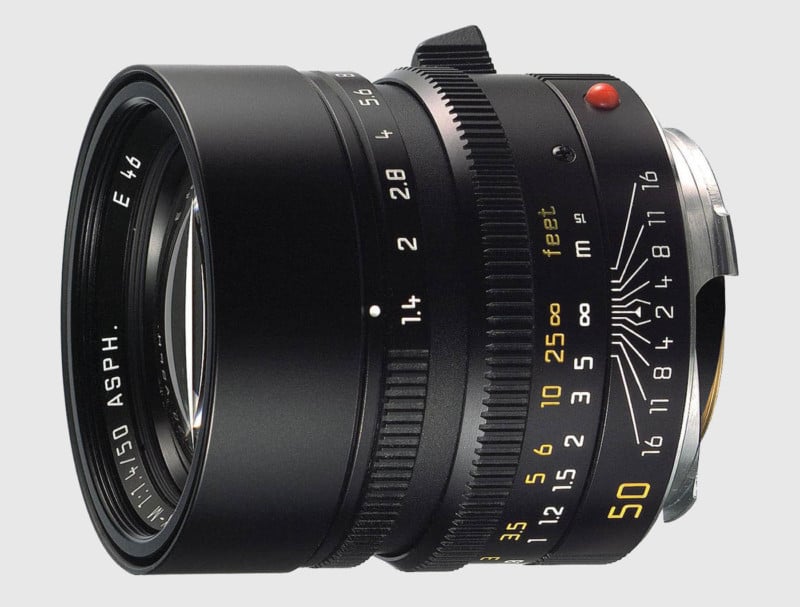
As traditional as Leica comes, the Summilux affords a signature glow and a treasured bokeh. The Summilux and Noctilux have a lot in widespread. Some name the Noctilux a Summilux on steroids. Each have an enchanting 3D look, which means excessive distinction on the level of focus and lowering distinction into the velvety out-of-focus foreground and background.
The Noctilux bokeh is a bit dreamier, however the Summilux bokeh has a swirly character all of its personal. Think about the Summilux 35mm f/1.4, initially launched in 1961, broadly often known as the “king of bokeh.” Moreover this, the Summilux creates a clean mild and pretty saturated colours.

Whereas the Summilux lacks the utter sharpness of an APO-Summicron lens, it’s quicker than any Summicron, and it possesses extra of that ineffable “Leica look.” Just like the Summicron and Summarit, its prefix refers to a Leica lens from 1933, the Summar, whose etymology stays obscure.

Summicron
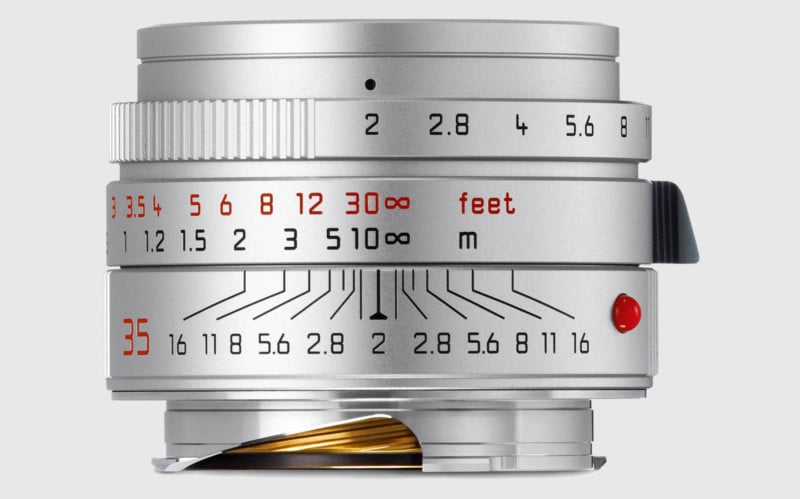
Recognized for sharpness, the Summicron excels in recording distinction and texture. This makes it very nicely suited to panorama and studio pictures, for instance. An ordinary Summicron (non-APO) prices far lower than a Summilux or Noctilux, and whereas its most aperture of f/2 doesn’t ship the identical creamy bokeh as these classes, it nonetheless has loads of advantages.

The Summicron is sharp corner-to-corner even when shot broad open. The current 50mm model, designed in 1979 by the legendary Dr. Walter Mandler, stays non-aspherical but achieves unbelievable element and correct colours. Summicron bokeh is much less opaque, extra medical, and agency than that of the Summilux or Noctilux, and it’s smaller, with extra outlined circles. However at full aperture, a Summicron is way simpler to focus.
APO-Summicron
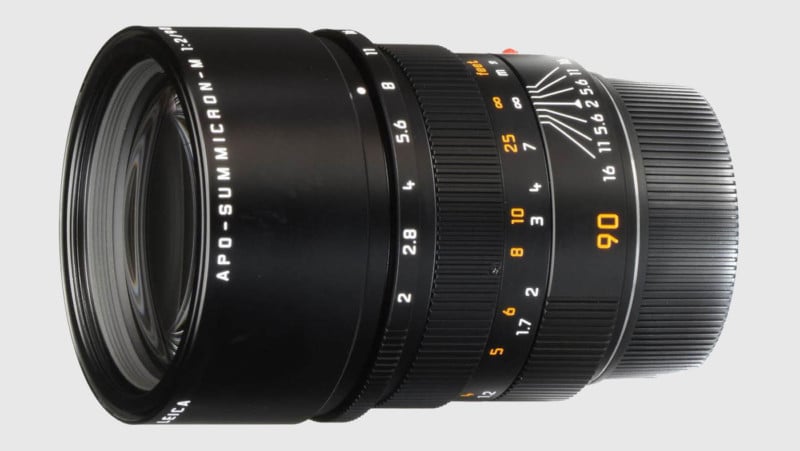
Leica’s APO-Summicron lenses are the assembly level between the Summicron and Summilux. The place the Summicron falls behind the Summilux and Noctilux in bokeh, it greater than compensates in crisp element and fierce coloration accuracy as an APO (which denotes the apochromatic design).
Chromatic aberration occurs when the purple, inexperienced, and blue wavelengths fail to coincide on the sensor. This leads to fringing and flaring. Apochromatic lenses align the RGB waves and in doing in order that they appropriate distortion and improve coloration accuracy, even at full aperture.

APO lenses additionally ship extra shades of grey to the sensor, so photographs develop into extremely detailed and wealthy in distinction. The APO-Summicron yields the very best diploma of topic separation because of the intense distinction it creates between the purpose of focus and the foreground and background. For many who recognize the medical look, an APO-Summicron enhances nearly all the pieces in a great way.
APO-Telyt
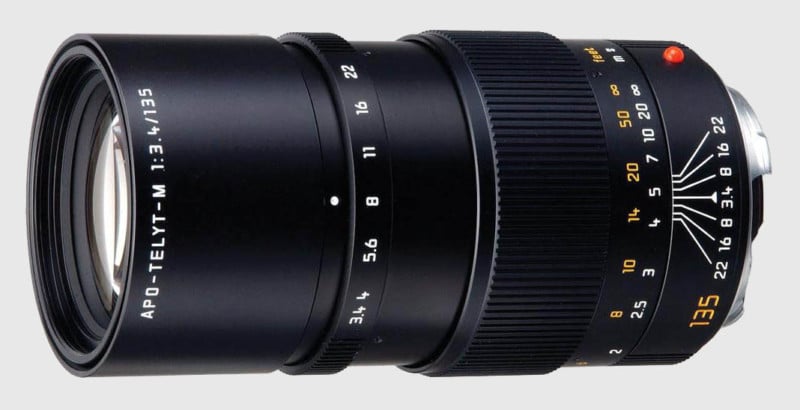
The longest focal size in right this moment’s M lens system, the APO-Telyt 135mm f/3.4 additionally advantages from apochromatic design. Just like the APO-Summicrons, this lens gives putting distinction, sharpness, and determination in any respect apertures. However as a result of it’s a telephoto lens with a quickest pace of f/3.4, it earns its personal identify within the Leica lens household.

Elmarit, Summarit, Summaron

With such a wealthy historical past and custom of crafting the world’s most interesting lenses, Leica affords its inimitable rendering in even the only classes. The Elmarit, Summarit, and Summaron, for instance, present greater than sufficient magnificence and character, at a way more approachable worth.
Easier designs and cheaper uncooked supplies assist preserve the Elmarit, Summarit, and Summaron cost-effective. They’re additionally small, light-weight, and due to this fact distinctive for road pictures. The Tri-Elmar-M 16-18-21 f/4 is the one remaining “zoom” lens in Leica’s present M portfolio. Elmarit, Summarit, and Summaron lenses come in numerous focal lengths, from macro and wide-angle to tele and all factors in between.

Leica M lenses are about greater than exclusivity, heavenly bokeh, or absolute sharpness. Every M lens, together with the Elmarit, Summarit, and Summaron, affords a picturesque view of the world. Different, older M lenses just like the Elmar, Hektor, and Thambar additionally present the “Leica look” in their very own distinct method. These, nonetheless, may be harder to seek out. Thankfully, an active market of pre-owned lenses, together with classic items, exists right this moment.
Selecting an M Lens
Few lens firms provide such a variety of eras from which to decide on. Lenses from completely different a long time possess their very own tackle qualities like bokeh or coloration. Priorities and tastes change over the a long time. Importantly, many lenses are available two classes — pre-aspherical and aspherical — which determines their coloration accuracy and distortion correction. Temper is an integral a part of every Leica lens’ look.
Prime or Zoom?
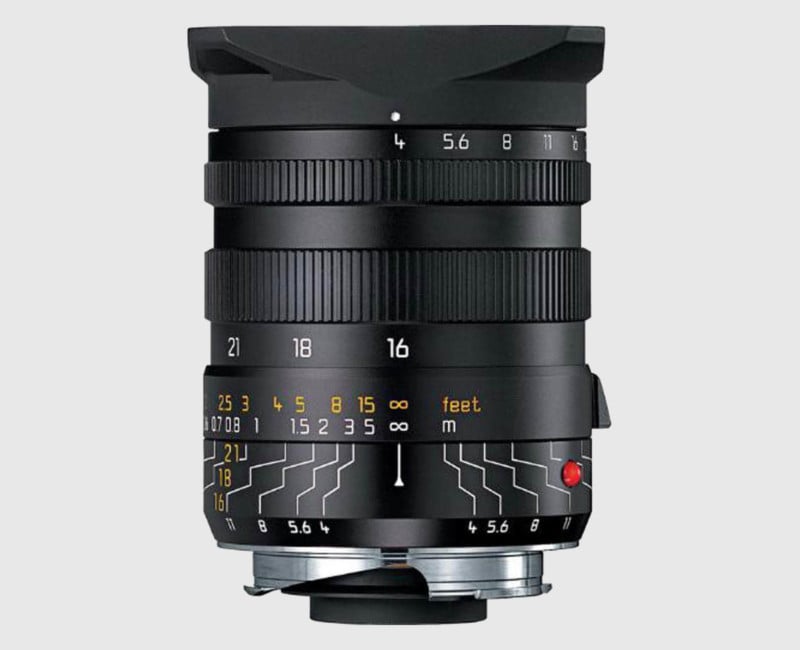
The overwhelming majority of Leica lenses are prime lenses, so should you favor utilizing a zoom lens, your choices are fairly restricted. The one one in manufacturing on the time of this writing is the $6,500 Leica 16-18-21mm f/4.0 Tri Elmar-M Aspherical lens. Leica additionally beforehand produced a Tri-Elmar-M 28–35–50 mm f/4 ASPH.
Aspherical or Not?
So-called “classic lenses” don’t incorporate aspherical parts. Any Leica lens (or, for that matter, every other digital camera lens) made earlier than the 1966 debut of the Noctilux 50mm f/1.2 is pre-aspherical. With that lens Leica introduced aspherical lens design to the world. Even a few of right this moment’s present Leica M-mount choices, just like the Summicron 50mm, designed in 1979, are non-aspherical but very high-performance.
Pre- or non-aspherical lenses had been initially designed for movie, which doesn’t carry the identical necessities for sharpness, coloration accuracy, and distinction {that a} high-resolution sensor does. As a substitute, these lenses present extra softness to a picture. Traces might not seem as straight as they really are. Colours can render barely completely different than what the attention sees.
However this could have a lovely impact on the ultimate picture, whether or not it’s movie or digital. Classic lenses can specific a way of nostalgia, of bygone a long time. They’ll additionally tame a high-resolution sensor’s medical precision.
Aspherical lenses, denoted as ASPH, appropriate distortions and ship higher coloration accuracy. They current a extra sensible view of a scene or topic than pre- or non-aspherical lenses. Inside this class are the apochromatic, or APO, lenses. These take away chromatic aberrations to create an ultra-precise and detailed picture with unbelievable coloration accuracy, even when shot broad open. Within the M-mount, Leica makes APO-Summicron lenses — 35mm, 50mm, 75mm, and 90mm — and the APO-Telyt 135mm f/3.4.
In case you are capturing a movie Leica M rangefinder, then each older and newer Leica lenses will pair properly and produce unbelievable images. In case you are capturing a more moderen digital Leica M rangefinder, nonetheless, you could need to focus your consideration on newer lenses with the most recent design applied sciences, as older lenses might produce issues like aberrations, vignetting, and coloration casts in your images that you could be not discover fascinating.

Temper
The look {that a} lens gives helps inform a narrative. Lenses create temper. Trying to current actuality in its each element, or painting a sci-fi sort of sharpness? Select an APO lens. Telling the story of a younger backpacker drifting throughout the Indian subcontinent? A classic lens would soften the sunshine and coloration to specific a way of foreignness and slowed-down time.
Bokeh evokes a way of temper as nicely. Leica lenses are well-known for his or her bokeh, and every lens class possesses its personal signature bokeh. Actually, a lot of the “Leica look” consists of the gorgeous abstractness of bokeh.
Because of this, Leica lens classes differentiate themselves based mostly on how they render when shot broad open. At medium aperture or stopped down, the variations between classes will develop into much less noticeable.
However at full aperture, the bokeh and the separation of the topic from the foreground and background change dramatically from class to class: Noctilux photographs at f/1 will look very distinct from an Elmarit’s at f/2.8. Nevertheless, at these full apertures, the main focus should be good, which is difficult with a rangefinder. A Noctilux requires expertise and experience, not only a fats pockets.
As soon as a photographer sees how every Leica lens class renders otherwise, she or he will start to check topics otherwise. Leica lenses view the world in their very own method, which lets photographers embody a sure lens’ expression in their very own storytelling.
As a result of the true character of every Leica lens class comes out when capturing broad open, right here is the place a photographer would ideally make the selection between which lens class to buy.
Why Are Leica Lenses So Costly?
Leica is understood for having among the highest worth tags for cameras and lenses on the earth of pictures, and a typical digital camera and lens pairing can price as a lot as a automobile.
Leica lenses are costly for a number of causes, amongst that are:
1. Construct High quality. One motive is that they’re made with high-quality supplies and meticulous consideration to element, which provides to the price of manufacturing.
2. Status. Leica is among the most recognizable manufacturers in pictures and has a repute of being nearly a luxurious good and standing image along with being a bit of helpful expertise.
3. Restricted Portions. Leica additionally produces far fewer cameras and lenses in comparison with different firms with vastly bigger market shares. Resulting from economies of scale, Leica should promote fewer lenses at greater costs in comparison with mass-market manufacturers that promote far higher numbers of merchandise at far decrease costs.
Most Leica naysayers will first assault the worth tag. Sure, these are high-end digital camera methods, particularly the M. Pre-owned digital camera our bodies and lenses exist aplenty, however they nonetheless usually price greater than a brand new system from one other model.
With the elephant within the room acknowledged, costs for M lenses rely upon measurement and complexity. Smaller, less complicated glass parts within the Summicron and Elmarit are simpler to supply and require fewer supplies, whereas the Summilux and Noctilux use a lot bigger glass parts that require precision throughout a higher floor space. APO lenses make use of extremely exact optical designs and require extraordinarily low tolerances for variation, which makes them very costly. Cool bokeh or blistering element don’t come low cost.
Different Drawbacks of Leica Lenses
Moreover worth, different drawbacks exist in M lenses. For one factor, M lenses usually are not climate sealed. They continue to be open to the weather and can collect mud and moisture. When an M lens is just not correctly protected or saved, haze and mildew can develop into problematic. Giant particulates, together with eyelashes, can lodge themselves underneath the glass.
M lenses require upkeep over time or a long time. They’ll fall out of adjustment, and components can come free. Thankfully, for this and any points equivalent to mildew, mud, and even scratches, M lenses lend themselves to restore. Leica or different accredited technicians can carry out a CLA — clear, lubricate, regulate — on even the oldest M-mount lenses. That is good for photographers who put their M lenses to arduous work, or for savvy patrons who buy a considerably beat-up lens for reasonable and pay to have it restored. Leica lenses don’t have any shelf life.
A Record of Leica M Lenses
Here’s a checklist of Leica M-mount lenses, each historic ones in addition to these at present in manufacturing:
- 16-18-21mm f/4 Tri-Elmar-M ASPH
- 28–35–50mm f/4 Tri-Elmar-M ASPH
- 18mm f/3.8 Tremendous-Elmar-M ASPH
- 21mm f/1.4 Summilux-M ASPH
- 21mm f/2.8 Elmarit-M
- 21mm f/2.8 Elmarit-M ASPH
- 21mm f/3.4 Tremendous-Angulon-M
- 21mm f/4.0 Tremendous-Angulon-M
- 24mm f/1.4 Summilux-M ASPH
- 24mm f/2.8 Elmarit-M ASPH
- 24mm f/3.8 Elmar-M ASPH
- 28mm f/5.6 Summaron-M
- 28mm f/1.4 Summilux-M ASPH
- 28mm f/2 Summicron-M ASPH
- 28mm f/2.8 Elmarit-M
- 28mm f/2.8 Elmarit-M ASPH
- 35mm f/1.4 Summilux
- 35mm f/1.4 Summilux-M ASPH
- 35mm f/2 Summicron-M
- 35mm f/2 Summicron-M ASPH
- 35mm f/2.5 Summarit-M
- 50mm f/0.95 Noctilux-M ASPH
- 50mm f/1 Noctilux-M
- 50mm f/1.2 Noctilux-M
- 75mm f/1.25 Noctilux-M
- 50mm f/1.4 Summilux
- 50mm f/1.4 Summilux-M ASPH
- 50mm f/1.5 Summarit
- 50mm f/2 Summicron-M
- 50mm f/2 APO-Summicron-M ASPH
- 50mm f/2.5 Summarit-M
- 50mm f/2.8 Elmar-M
- 75mm f/1.4 Summilux-M
- 75mm f/2 APO-Summicron-M ASPH
- 75mm f/2.5 Summarit-M
- 135mm f/4.0 Elmar
- 90mm f/2.8 Elmarit-M
- 90mm f/2 APO-Summicron-M ASPH
- 90mm f/2.5 Summarit-M
- 90mm f/4 Macro-Elmar-M
- 135mm f/2.8 Elmarit-M
- 135mm f/3.4 APO-Telyt-M
- 135mm f/4.0 Elmar
- 135mm f/4.5 Hektor
Conclusion
A Leica lens could also be prohibitive, however the efficiency, character, and longevity of a Leica M lens would possibly persuade some to forgo a number of lenses instead of a single piece of Leica glass. Few, if any, different model lenses convey temper and identification like a Leica.
Capturing a Leica M lens means slowing down, concentrating on the essence and roots of pictures, and sustaining a dedication to inventive magnificence. For a lot of, proudly owning a Leica M lens proves a crowning achievement, a lifelong possession, and an excellent motive to play the lottery. With Noctilux and Summilux bokeh, and APO-Summicron precision, Leica encourages photographers to dream.
Picture credit: Header photograph courtesy Leica Digicam
